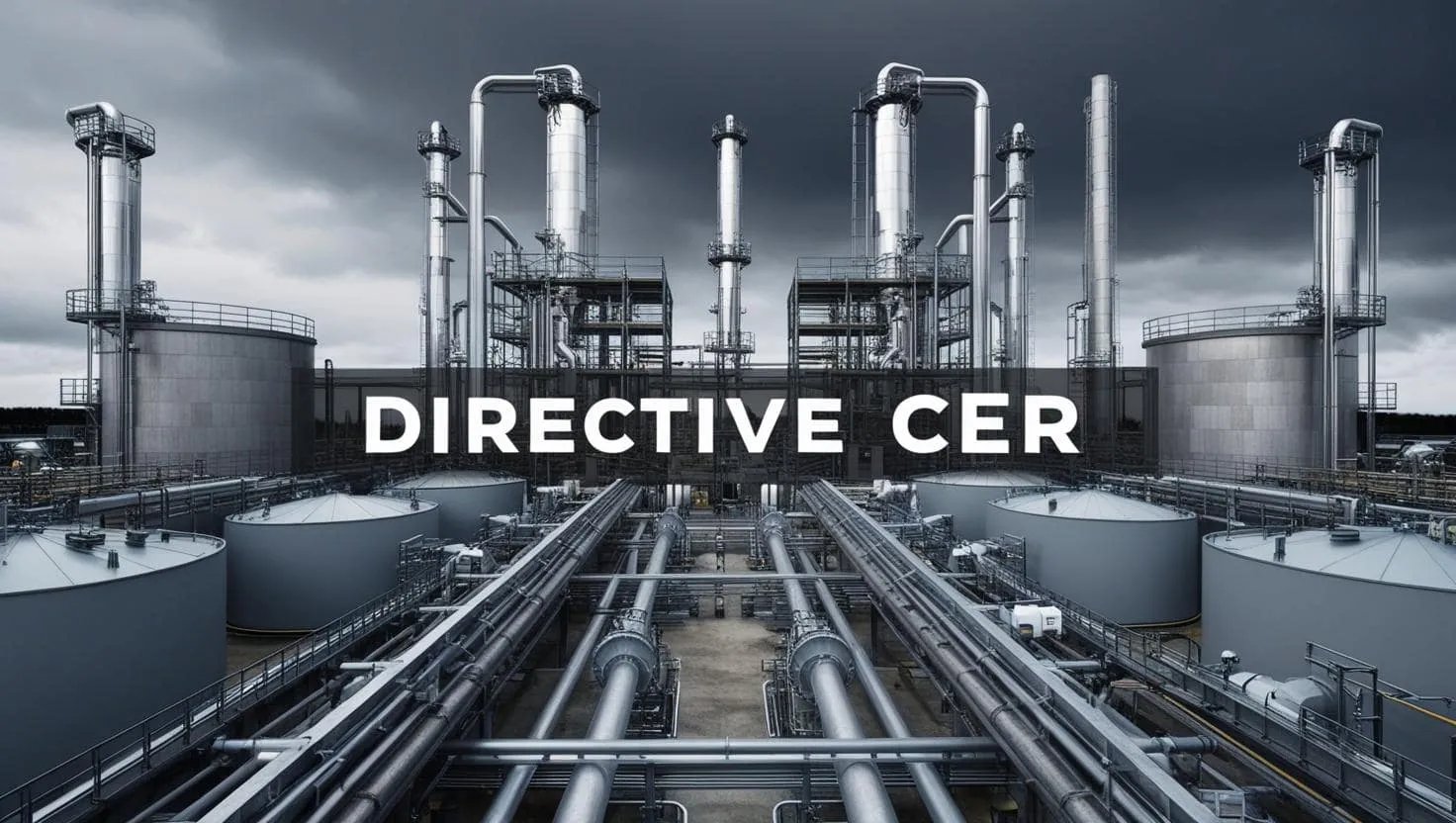
Understanding the CER Directive (Critical Entities Resilience)
The CER Directive (Critical Entities Resilience), adopted by the European Union in December 2022, establishes a crucial regulatory framework to strengthen the resilience of critical entities against various threats such as cyberattacks, pandemics, and natural disasters. Replacing an earlier directive, it broadens its scope to better protect vital infrastructures that support not only the economy but also the security and well-being of European citizens. This article provides an in-depth analysis of the directive’s implications, objectives, and requirements, offering a clear overview of its impact on organizations and public administrations.
Objectives of the CER Directive
The CER Directive aims to establish a robust framework for the resilience of critical entities in response to an increasingly complex threat environment.
Main Objectives of the CER Directive
One of the main objectives of the CER Directive is to strengthen the resilience of critical infrastructures by imposing minimum risk management requirements. This includes establishing common standards to protect these entities, ensuring a coordinated response in the event of a crisis. Additionally, the directive aims to enhance cross-border cooperation between Member States, enabling more effective crisis management that can have impacts beyond borders.
Target Audience of the CER Directive
The target audience of the directive includes not only the EU Member States but also critical entities operating in essential sectors such as:
- energy,
- transport,
- healthcare
Public administrations, responsible for regulation and supervision, also play a key role in enforcing the directive's requirements.
Expected Impact of Compliance
Compliance with the CER Directive is expected to enhance the robustness of critical infrastructures, reduce service disruptions, and strengthen coordination during crises across Europe. By integrating high standards for resilience, critical entities will be better prepared to face contemporary challenges while ensuring the continuity of essential services.
Scope of Application
The scope of the CER Directive is broad, encompassing 11 key sectors deemed essential to the proper functioning of modern societies. Unlike the previous directive, which covered only two sectors:
- energy
- transport
This new directive extends to areas such as:
- drinking water,
- healthcare,
- financial infrastructures,
- public safety
Each sector is subject to specific requirements aimed at ensuring their resilience against diverse threats, thereby strengthening the overall security of the European Union.

Overview of Key Themes
The CER Directive addresses several fundamental themes to ensure the resilience of critical entities.
Identification of Critical Entities
Each Member State must identify and classify critical entities operating within its territory. This identification is crucial as it allows for focused protection efforts on infrastructures whose disruption or destruction would have a significant impact on national security and the continuity of services.
Risk Assessment
Critical entities are required to carry out comprehensive risk assessments, considering physical threats such as fires or floods, as well as cyber threats like ransomware. These assessments must be documented and communicated to the relevant authorities to ensure transparency and accountability.
Planning and Implementation of Resilience Measures
Critical entities must develop resilience plans that encompass preventive measures, rapid response strategies, and recovery protocols. This includes regular staff training, the implementation of monitoring systems, and the adoption of advanced technologies for effective incident management.
Incident Notification
Critical entities are obligated to report any major incident that could have cross-border consequences or significantly affect their operations. This notification mechanism is crucial to enable a rapid and coordinated response between Member States, minimizing the impact of crises.
Audits and Inspections
Control mechanisms, including audits and inspections, are necessary to ensure that critical entities comply with the directive's requirements. These audits not only assess compliance but also identify potential vulnerabilities that can be addressed before a crisis occurs.
Enhance the compliance of your critical infrastructures with DATIVE's expertise.
Implementation and Compliance
To ensure that critical entities comply with the CER Directive's requirements, systematic and rigorous implementation is essential.
Key Steps for Compliance
The compliance steps include identifying critical entities, performing risk assessments, developing resilience plans, and establishing reporting and control mechanisms. Each step must be documented and closely monitored to ensure continuous compliance.
Best Practices
Adopting best practices, such as continuous staff training and using advanced technologies for risk management, is crucial for effective compliance. Organizations should also establish partnerships with other critical entities to share information on threats and best practices.
Resources and Tools Available to Support Organizations
Resources such as guides, training, and risk assessment tools are available to help organizations comply with the directive. Member States, as well as private and public organizations, also provide essential support for the implementation of the requirements.

Relationship Between the CER Directive and Other Standards
The CER Directive is part of a broader regulatory framework, requiring an understanding of related standards that influence its application.
Complementary or Related Standards
It is notably linked to directives such as the NIS2 Directive, which focuses on cybersecurity, as well as the General Data Protection Regulation (GDPR). These complementary standards work together to ensure an integrated approach to the security of critical infrastructures.
Comparison or Harmonization with Other Standards
The directive aims to harmonize its requirements with other international standards, such as the ISO 27000 series, which deals with information security management. This harmonization ensures a consistent approach to the security of sensitive information within critical entities, facilitating the implementation of robust and integrated security practices.
Move from theory to operational. DATIVE mobilizes field experts to orchestrate the compliance of your critical systems.
Evolution and News of the CER Directive
The evolution of the CER Directive is marked by recent updates and emerging trends that shape its application.
Future Trends
Future trends include increased attention to digital resilience, with:
- growing investments in cybersecurity technologies,
- a global interconnection of critical infrastructures.
There will also be a focus on sustainability and the consideration of environmental impacts in resilience strategies.
The Benefits and Challenges of the CER Directive
The implementation of the CER Directive presents both significant benefits and notable challenges for the entities involved.
Benefits for Businesses or Organizations
Businesses can benefit from better crisis preparedness, reduced service disruptions, and improved security reputation. By adopting resilience measures, they can also strengthen their market position and gain stakeholder trust.
Challenges or Limitations
However, challenges remain, particularly the cost of compliance and the complexity of risk assessments. Some entities, especially small and medium-sized enterprises, may lack the resources to meet the Directive's requirements, which could create a competitive disadvantage.

Resources and References
To deepen your knowledge of the CER Directive, various resources are available, ranging from official EU documents to case studies of successful implementation. Government websites, academic publications, and reports from professional organizations offer valuable insights into best practices and challenges encountered.
Conclusion
The CER Directive represents a significant advance in the protection of critical infrastructures within the European Union. By establishing strict standards, it requires entities to adopt a proactive approach to threats, thus turning compliance into a strategic opportunity. Businesses should view this Directive not only as a regulatory obligation but as a path to increased resilience and sustainable competitiveness.
With DATIVE, securely protect your critical industrial operations and anticipate future European regulatory requirements.
FAQ
Question 1: What is the geographical scope of the CER Directive?
The CER Directive applies to all EU Member States and covers a wide range of sectors deemed critical to the safety and resilience of infrastructures.
Question 2: What are the main differences between the CER Directive and the NIS2 Directive?
The CER Directive focuses on the overall resilience of critical entities, including physical and cyber threats, while the NIS2 Directive specifically addresses the cybersecurity of critical services.
Question 3: How can businesses prepare for compliance?
Businesses should start by identifying their critical infrastructures, assessing risks, developing resilience plans, and establishing notification and control mechanisms.
Question 4: What resources are available to assist with implementation?
Guides, training, and risk assessment tools provided by Member States and professional organizations are available to help businesses comply.
Question 5: What are the economic impacts of complying with the CER Directive?
Compliance may incur initial costs, but it also offers long-term benefits, such as reduced service disruptions, enhanced security, and improved reputation, thereby contributing to the economic sustainability of organizations.





